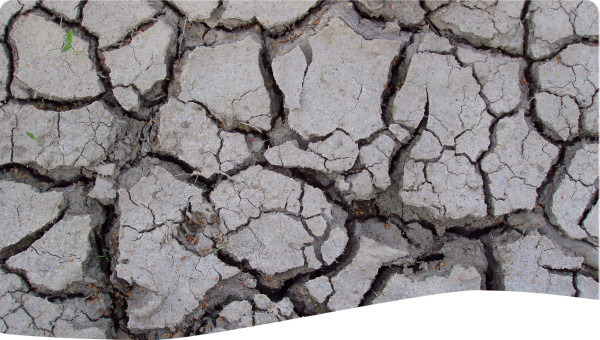In Kyrgyzstan’s remote mountains, rural women cultivate medicinal herbs on degraded lands, combining sustainable land management with income generation. Supported by the Rural Development Public Fund, the initiative restores fragile ecosystems, conserves biodiversity, and improves livelihoods. By working near their homes, women enhance safety, reduce GBV risks, and gain recognition as environmental and economic leaders while promoting regulated, biodiversity-friendly herb production.
The mountainous landscapes of Kyrgyzstan are among the country’s most fragile ecosystems. Rural women living there face isolation, limited resources, and the growing impacts of climate change. These challenges have resulted in environmental degradation, economic hardship, and social vulnerability.
To respond, women from vulnerable communities initiated a project to cultivate medicinal herbs on degraded land, merging ecological restoration with livelihood creation. The harsh terrain and loss of vegetation had reduced soil fertility and biodiversity, intensifying poverty. Cultivating herbs became a viable way to restore soils, conserve native species, and create steady income.
This community-driven initiative addresses the intersection of environmental and social issues by promoting sustainable land management (SLM), biodiversity protection, and women’s empowerment. Herb cultivation takes place in small plots near homes, enabling women to balance household duties and reduce the risk of gender-based violence linked to travel or outdoor labour in remote areas.
The project contributes directly to global frameworks such as the Convention on Biological Diversity and the Nagoya Protocol by supporting regulated systems for biodiversity use and preventing illegal herb exports. It highlights the potential of local social entrepreneurship to enhance well-being and food security through equitable benefit-sharing.
Through collective action, these women demonstrate that restoring degraded mountain ecosystems can go hand-in-hand with economic independence, stronger communities, and recognition of women’s leadership in environmental stewardship.
1. Cultivating medicinal herbs on degraded lands
Women identified suitable degraded plots and began cultivating locally adapted medicinal herbs valued for their healing properties. The activity restores land productivity, supports biodiversity, and supplies herbal materials to local markets.
2. Integrating SLM practices
The women apply soil conservation, reforestation, and biodiversity-friendly techniques to reclaim eroded areas. These actions reduce degradation, improve water retention, and strengthen ecosystem resilience.
3. Locating cultivation near homes
Planting close to households allows women to manage crops while caring for families. This approach reduces exposure to GBV linked to distant fieldwork and aligns with cultural norms while empowering women economically.
4. Processing and marketing
Harvested herbs are carefully dried and processed before being sold in local markets, generating steady income. The activity preserves traditional medicinal heritage and adds value through local processing.
5. Community engagement and knowledge sharing
The initiative encourages training workshops and awareness programmes where women exchange knowledge on SLM, biodiversity, and entrepreneurship. Education promotes replication and community cohesion.
6. Leadership and champions
- Gulnur Chodronova leads reforestation and water-conservation efforts, mobilising community participation.
- Gulmira Bektemirova advocates for gender-inclusive land and drought-resilience policies at district and national levels.
- Sonungul Zhyltyrova introduces climate-resilient crops and small enterprises, linking innovation with economic diversification.
- Begay Murzalieva promotes cultural cohesion and Indigenous knowledge through community programmes.
- Zhanar Algozhoeva conducts training and awareness sessions that strengthen environmental literacy and adaptive capacity.
7. Addressing challenges
- Limited access to land and water rights restricts women’s ability to scale restoration.
- Poor infrastructure and technology impede irrigation and modern SLM practices.
- Socio-cultural barriers continue to limit women’s education and decision-making.
- Market access remains weak; linking women’s products to value chains is vital.
- Skills gaps require ongoing capacity-building to adapt to evolving environmental conditions.
1. Ecological restoration
Medicinal-herb cultivation and reforestation have revitalised degraded mountain slopes, improving soil structure, preventing erosion, and restoring native biodiversity.
2. Women’s economic empowerment
Women now earn income from the sale of medicinal herbs, contributing to household stability and local economies. Working near home has improved safety and participation.
3. Strengthened SLM and climate resilience
Water-harvesting, soil-conservation, and sustainable-grazing practices have increased resilience to drought and reduced vulnerability to climate extremes.
4. Knowledge and leadership
Training sessions and peer learning led by local champions enhanced women’s technical and entrepreneurial skills. These experiences positioned women as leaders and educators in SLM.
5. Policy advocacy
Through leaders like Gulmira Bektemirova, the initiative has influenced discussions on gender-inclusive land rights and the integration of women’s perspectives into regional drought-resilience strategies.
6. Cultural and social cohesion
Women’s networks celebrate Indigenous knowledge, fostering unity and pride in local heritage while reinforcing environmental stewardship.
7. Replication potential
The model—small-scale herb cultivation near homes combined with SLM—is low-cost, sustainable, and replicable in other mountainous or drought-affected regions.
8. Persistent challenges
Access to resources, infrastructure, and markets remains limited. Continued advocacy, partnerships, and training are necessary to ensure long-term viability and scale-up.
Overall impact
The Rural Development Public Fund’s women-led project demonstrates that restoring fragile mountain ecosystems can advance biodiversity conservation, economic empowerment, and social resilience simultaneously. It offers a practical model for other remote, climate-vulnerable areas seeking inclusive and sustainable development.
Cultivating medicinal herbs on degraded mountain lands restores ecosystems and provides sustainable income, showing that ecological and economic goals can align.
Locating plots near homes enhances women’s safety and participation while maintaining productivity and community acceptance.
Local champions and peer training build lasting capacity, enabling replication of sustainable practices in other regions.
Advocacy for gender-inclusive land and water rights is essential for scaling women-led restoration efforts.
Integrating cultural heritage with biodiversity conservation strengthens social cohesion and long-term environmental stewardship.

